Posted on June 10th, 2010 by ASEE
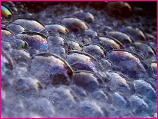 Students grades 4-12 conduct a simple experiment that demonstrates how a familiar chemical — liquid soap — can be used to break the surface tension of water and propel a toy boat. Older students move into further inquiry of chemical dispersants and their use in combating oil spills.
Students grades 4-12 conduct a simple experiment that demonstrates how a familiar chemical — liquid soap — can be used to break the surface tension of water and propel a toy boat. Older students move into further inquiry of chemical dispersants and their use in combating oil spills.
Read More
Filed under: Class Activities, Grades 6-8, Grades 9-12, Grades K-5 | 1 Comment »
Tags: Chemistry, Grades 4-12, Lesson Plan
Posted on May 3rd, 2010 by ASEE
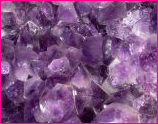 This activity from the Pacific Northwest National Laboratory involves students, grades 6-12, in the formation of crystals on glass slides. In conducting their experiment, students learn about basic principles that guide the work of materials engineers and scientists.
This activity from the Pacific Northwest National Laboratory involves students, grades 6-12, in the formation of crystals on glass slides. In conducting their experiment, students learn about basic principles that guide the work of materials engineers and scientists.
Read More
Filed under: Class Activities, Grades 6-8, Grades 9-12 | 1 Comment »
Tags: Chemical Engineering, Crystal study, Materials Engineering
Posted on March 29th, 2010 by Jaimie Schock
 The Learning Roomba educational toolkit attempts to address robotics usability issues by keeping total costs down while making the tools as easy to use as possible. This toolkit is a collection of resources and tools to facilitate teaching robotics to pre-college students. Through these resources, students can learn about science, math, and engineering topics in a fun and exciting way.
The Learning Roomba educational toolkit attempts to address robotics usability issues by keeping total costs down while making the tools as easy to use as possible. This toolkit is a collection of resources and tools to facilitate teaching robotics to pre-college students. Through these resources, students can learn about science, math, and engineering topics in a fun and exciting way.
Read More
Filed under: Class Activities, Grades 6-8, Grades 6-8, Grades 9-12, Grades 9-12, Lesson Plans | Comments Off on Curriculum: Learning Roomba
Tags: Building robots, Class Activities, Curriculum, Lesson Plan, Robotics, Technology for Learning
Posted on March 29th, 2010 by Jaimie Schock
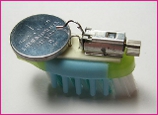 BristleBots are one variety of the popular vibrobot, a simple category of robot controlled by a single vibrating motor. This BristleBot is made from a toothbrush and a few low-cost materials and can easily be modified for additional challenge.
BristleBots are one variety of the popular vibrobot, a simple category of robot controlled by a single vibrating motor. This BristleBot is made from a toothbrush and a few low-cost materials and can easily be modified for additional challenge.
Read More
Filed under: Class Activities, Grades 6-8, Grades 9-12, Grades K-5 | 1 Comment »
Tags: Building robots, Class Activities, DIY, Lesson Plan, Robotics
Posted on March 8th, 2010 by ASEE
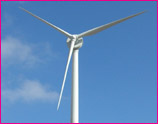 This lesson plan from PBS helps students discover the basics of wind power technology in having them build and refine a wind turbine. Students examine the concept of renewable energy, identify the benefits and drawbacks of wind power, and compare its costs and impact on the environment with other energy sources.
This lesson plan from PBS helps students discover the basics of wind power technology in having them build and refine a wind turbine. Students examine the concept of renewable energy, identify the benefits and drawbacks of wind power, and compare its costs and impact on the environment with other energy sources.
Read More
Filed under: Class Activities, Grades 9-12, Grades 9-12, Lesson Plans | 2 Comments »
Tags: Mechanical engineering, Wind Technology, Wind Turbine
Posted on March 1st, 2010 by ASEE
 Students grades 5-12 assume the role of civil engineers in constructing a model suspension bridge. They learn about other types of spans — including arch, girder, truss, and cantilever — and of the careful balance of compression and tension required in bridge building.
Students grades 5-12 assume the role of civil engineers in constructing a model suspension bridge. They learn about other types of spans — including arch, girder, truss, and cantilever — and of the careful balance of compression and tension required in bridge building.
Read More
Filed under: Class Activities, Grades 6-8, Grades 6-8, Grades 9-12, Grades 9-12, Lesson Plans | 2 Comments »
Tags: Bridge building, Bridge Design, Civil Engineering, Grades 5-12
Posted on February 22nd, 2010 by ASEE
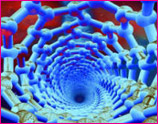
This “Nano Waterproofing” lesson explores how materials can be modified at the nano scale to provide features such as waterproofing and stain resistance. Student teams develop their own waterproofing technique for a cotton fabric and test their design against a fabric that has been altered through nanotechnology applications.
Read More
Filed under: Class Activities, Grades 6-8, Grades 6-8, Grades 9-12, Grades 9-12, Lesson Plans | Comments Off on Lesson: Nano Waterproofing
Tags: Chemical, Class Activities, Design, Grades 6-8, Grades 9-12, Lesson Plans, Nanotechnology
Posted on February 8th, 2010 by ASEE
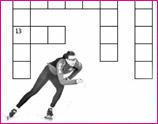
From the hinge in the slap skate to the texture of the swift suit, engineering enhances athletic achievement. Challenge your students to test their knowledge of the technology used in this exciting Olympic sport with a fun crossword puzzle for grades 6-12. Clues can be found in this week’s feature on speed skating, and in the answer key.
Read More
Filed under: Class Activities, Grades 6-8, Grades 9-12 | 1 Comment »
Tags: Crossword Puzzle, Fun & Games, Olympics, Sports
Posted on February 1st, 2010 by ASEE
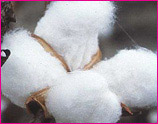 In this activity, students debate who invented the cotton gin. They come to realize the complexity of the seemingly simple historical statement: “Eli Whitney invented the cotton gin.” A follow-up discussion explores the nature of invention, the importance of history, and the nature of historical evidence.
In this activity, students debate who invented the cotton gin. They come to realize the complexity of the seemingly simple historical statement: “Eli Whitney invented the cotton gin.” A follow-up discussion explores the nature of invention, the importance of history, and the nature of historical evidence.
Read More
Filed under: Class Activities, Grades 6-8, Grades 9-12 | Comments Off on Activity: Who Invented the Cotton Gin?
Tags: African-American history, Class Activities, Class Debate, Ideas & Inventions
 Students grades 4-12 conduct a simple experiment that demonstrates how a familiar chemical — liquid soap — can be used to break the surface tension of water and propel a toy boat. Older students move into further inquiry of chemical dispersants and their use in combating oil spills.
Students grades 4-12 conduct a simple experiment that demonstrates how a familiar chemical — liquid soap — can be used to break the surface tension of water and propel a toy boat. Older students move into further inquiry of chemical dispersants and their use in combating oil spills.








 This activity from the Pacific Northwest National Laboratory involves students, grades 6-12, in the formation of crystals on glass slides. In conducting their experiment, students learn about basic principles that guide the work of materials engineers and scientists.
This activity from the Pacific Northwest National Laboratory involves students, grades 6-12, in the formation of crystals on glass slides. In conducting their experiment, students learn about basic principles that guide the work of materials engineers and scientists. The Learning Roomba educational toolkit attempts to address robotics usability issues by keeping total costs down while making the tools as easy to use as possible. This toolkit is a collection of resources and tools to facilitate teaching robotics to pre-college students. Through these resources, students can learn about science, math, and engineering topics in a fun and exciting way.
The Learning Roomba educational toolkit attempts to address robotics usability issues by keeping total costs down while making the tools as easy to use as possible. This toolkit is a collection of resources and tools to facilitate teaching robotics to pre-college students. Through these resources, students can learn about science, math, and engineering topics in a fun and exciting way. BristleBots are one variety of the popular vibrobot, a simple category of robot controlled by a single vibrating motor. This BristleBot is made from a toothbrush and a few low-cost materials and can easily be modified for additional challenge.
BristleBots are one variety of the popular vibrobot, a simple category of robot controlled by a single vibrating motor. This BristleBot is made from a toothbrush and a few low-cost materials and can easily be modified for additional challenge. This lesson plan from PBS helps students discover the basics of wind power technology in having them build and refine a wind turbine. Students examine the concept of renewable energy, identify the benefits and drawbacks of wind power, and compare its costs and impact on the environment with other energy sources.
This lesson plan from PBS helps students discover the basics of wind power technology in having them build and refine a wind turbine. Students examine the concept of renewable energy, identify the benefits and drawbacks of wind power, and compare its costs and impact on the environment with other energy sources. Students grades 5-12 assume the role of civil engineers in constructing a model suspension bridge. They learn about other types of spans — including arch, girder, truss, and cantilever — and of the careful balance of compression and tension required in bridge building.
Students grades 5-12 assume the role of civil engineers in constructing a model suspension bridge. They learn about other types of spans — including arch, girder, truss, and cantilever — and of the careful balance of compression and tension required in bridge building. 

 In this activity, students debate who invented the cotton gin. They come to realize the complexity of the seemingly simple historical statement: “Eli Whitney invented the cotton gin.” A follow-up discussion explores the nature of invention, the importance of history, and the nature of historical evidence.
In this activity, students debate who invented the cotton gin. They come to realize the complexity of the seemingly simple historical statement: “Eli Whitney invented the cotton gin.” A follow-up discussion explores the nature of invention, the importance of history, and the nature of historical evidence.